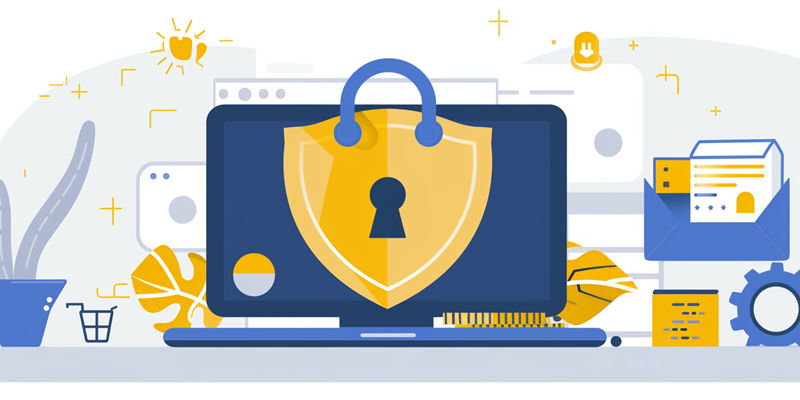The digital landscape is ever-evolving, and with it, the threats to web security are becoming more advanced and harder to detect. Traditional browser isolation methods are becoming outdated and insufficient for tackling the modern web’s challenges. Enter Secure Browser Extensions, a technology poised to reinvent the approach to browser security. As we delve deeper into the realm of modern cybersecurity, we witness the rise of innovative solutions like Secure Browser Extensions that are destined to transform the defense landscape against online threats.
The Shift from Traditional Browser Isolation to Secure Browser Extensions
Evolution of Web Threats
Web threats today are a far cry from the straightforward malware downloads of the past. Sophisticated phishing schemes are designed to deceive even the most discerning individuals, while ransomware can hold entire systems hostage with a single click. Moreover, the insidious nature of malicious browser extensions has added another layer of risk, silently compromising both privacy and security. Traditional browser isolation was once a knight in shining armor against such threats, segregating untrusted code in a secure environment. However, these evolving threats have overstepped the boundaries traditional methods were designed to defend.
These days, isolated environments are not agile enough to catch nuanced exploits or complex social engineering attacks that happen within the browser. Coupled with a workforce that’s increasingly dependent on web and SaaS applications, this outdated method struggles to protect against and adapt to the contemporary array of cyber dangers.
The Limitations of Traditional Browser Isolation
Once viewed as a staple in cybersecurity protocol, traditional browser isolation is now seen as a conflicted guardian, caught between the duty to protect and the need to perform. Though effective in quarantining potential threats, it came at a cost: performance degradation. This not only interrupted a user’s digital experience but also their productivity. As browsers become central to office tasks, resource-intensive isolation solutions hindered the smooth operability expected by users.
The heavyweight protective measures implemented in previous browser isolation techniques often led to a sluggish response time and a less-than-ideal browsing experience. When the digital workspace demands efficiency and speed, compromises to performance induced by security solutions can become a major source of frustration, leading to potential pushback from the workforce that relies on agility and rapid access to web resources.
The Advantages of Secure Browser Extensions
Enhanced Performance and User Experience
In an age where efficiency equates to competitive advantage, Secure Browser Extensions appear on the horizon as a beacon of progress. Their ability to amalgamate with browsers seamlessly, without dragging down device performance, marks a notable departure from the shackles of legacy security measures. These extensions embody a discreet yet robust layer of defense, virtually invisible in their operations, yet all-encompassing in their protective scope. They silently stand guard, ensuring that the user’s experience remains untainted by the hands of heightened security protocols.
For employees and users who balance the tightrope of productivity and security, this seamless integration is a welcomed advancement. Secure Browser Extensions enable users to continue their online activities without the nagging worry of slowdowns or the constant reminder of security barriers, embodying a harmony between performance and protection.
Real-Time Threat Detection and Machine Learning
Powered by the swift intellect of machine learning, Secure Browser Extensions analyze incoming data with a precision that outstrips their predecessors. As a webpage populates, these vigilant assistants scrutinize each element, looking for anomalies that signal a threat. This real-time analysis allows for an immediate response, nipping potential dangers in the bud before they can bloom into full-scale issues.
The superior capability of Secure Browser Extensions to deploy machine-learned algorithms elevates web security to an uncharted landscape of proactive defense. They enable the identification and neutralization of varied threats as they arise, well before the user can be compromised. This forward-thinking approach not only enhances security but does so without the end user needing to be aware of the complex processes at play behind the scenes.
Implementation and Accessibility of Secure Browser Extensions
Deployment Across Devices
In a considerably fragmented tech environment, where devices range from personal smartphones to enterprise workstations, the accessibility of Secure Browser Extensions shines brilliantly. They exude adaptability, capable of being deployed regardless of whether a device is under corporate management or belongs to an individual employee. This widespread compatibility provides corporations with a safety net that blankets every potential entry point, mitigating the risk of device-specific breaches.
The simplistic nature of extending these layers of security to both managed and unmanaged devices democratizes the fight against cyber threats. By diminishing the complications associated with varied device landscapes, Secure Browser Extensions pave the way for a more secure digital ecosystem that’s accessible to all, regardless of technical expertise or device ownership.
User Adoption and Compliance
As the digital world constantly changes, the risks to online security grow more complex and elusive. Outdated and inadequate are the older methods of browser isolation previously used to combat the shifts in the cyber environment. Secure Browser Extensions are emerging at the forefront of this battle, aiming to redefine the way we protect our online interactions. These extensions represent a significant leap forward in countering increasingly sophisticated cyber threats. As we dive into the depths of contemporary cyber defense, it’s clear that Secure Browser Extensions are at the heart of this evolution—a game-changing force built to fortify our digital lives against the dangers that lurk within the ever-advancing web. This breakthrough is not just an incremental step but a revolution in ensuring safer browsing experiences in an age where security is paramount.

